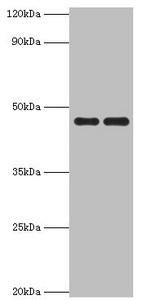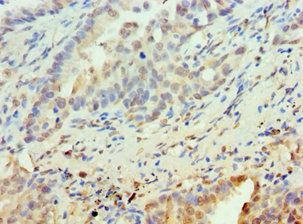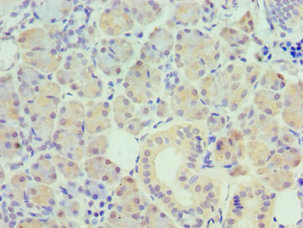Full Product Name
Rabbit anti-Homo sapiens (Human) PAX6 Polyclonal antibody
Alternative Names
AN 2 antibody; AN antibody; AN2 antibody; Aniridia type II protein antibody; D11S812E antibody; FVH1 antibody; KIAA0552 antibody; Leucine zipper putative tumor suppressor 3 antibody; LZTS3 antibody; MGC17209 antibody; MGDA antibody; Oculorhombin antibody; Paired box 6 antibody; Paired box gene 6 (aniridia keratitis) antibody; Paired Box Gene 6 antibody; Paired box homeotic gene 6 antibody; Paired box protein Pax-6 antibody; Paired box protein Pax6 antibody; PAX 6 antibody; PAX6 antibody; PAX6_HUMAN antibody; ProSAP-interacting protein 1 antibody; PROSAPIP1 antibody; Sey antibody; WAGR antibody
Species Reactivity
Human, Mouse
Immunogen
Recombinant Human Paired box protein Pax-6 protein (1-300AA)
Immunogen Species
Homo sapiens (Human)
Purification Method
Antigen Affinity Purified
Concentration
It differs from different batches. Please contact us to confirm it.
Buffer
PBS with 0.02% sodium azide, 50% glycerol, pH7.3.
Tested Applications
ELISA, WB, IHC
Recommended Dilution
| Application |
Recommended Dilution |
| WB |
1:500-1:2000 |
| IHC |
1:20-1:200 |
Storage
Upon receipt, store at -20°C or -80°C. Avoid repeated freeze.
Lead Time
Basically, we can dispatch the products out in 1-3 working days after receiving your orders. Delivery time maybe differs from different purchasing way or location, please kindly consult your local distributors for specific delivery time.
Usage
For Research Use Only. Not for use in diagnostic or therapeutic procedures.








